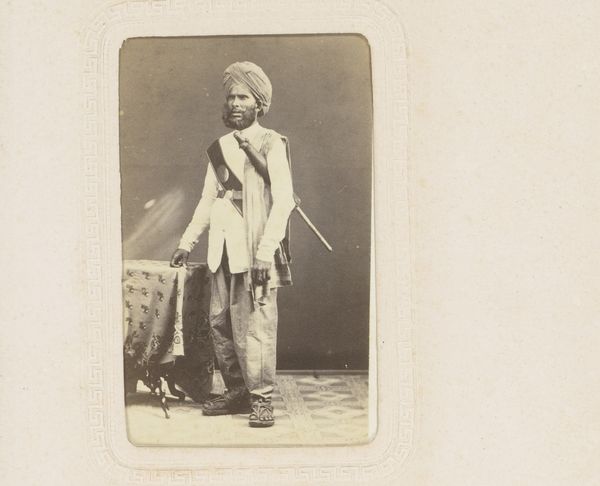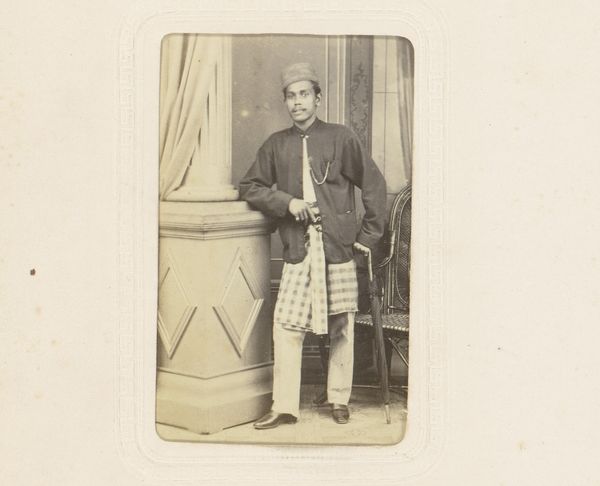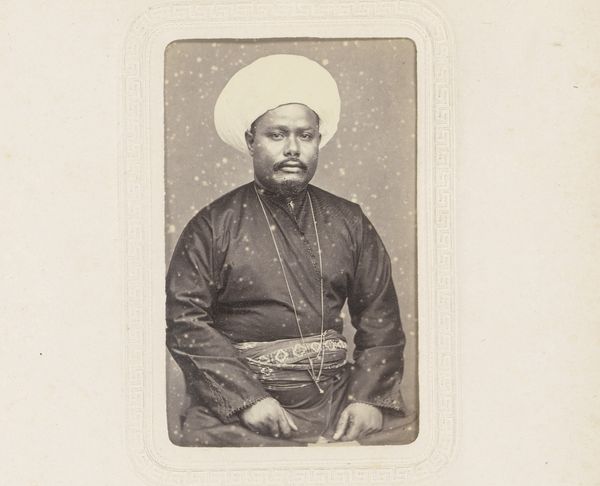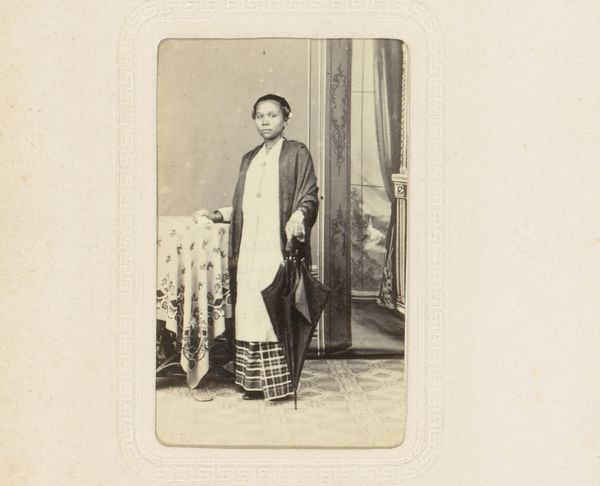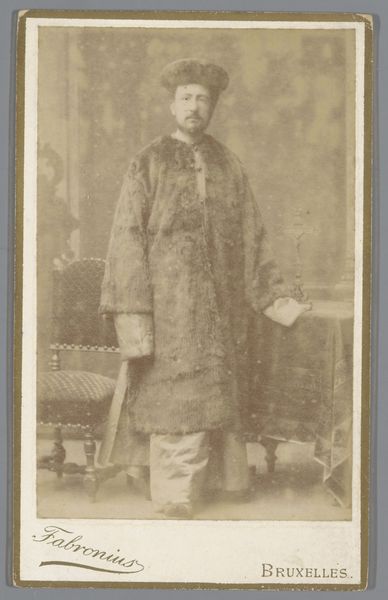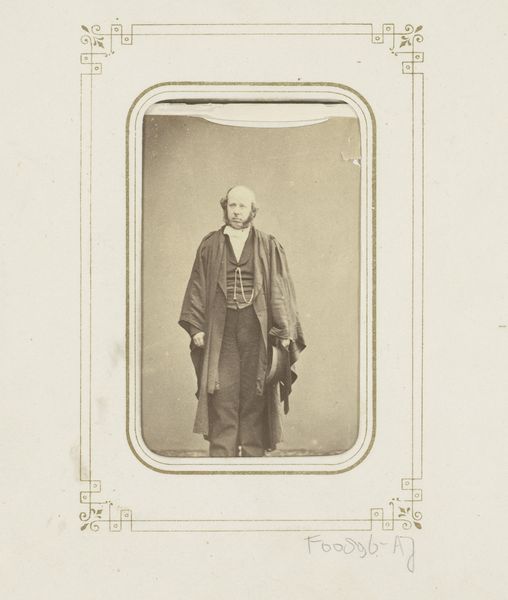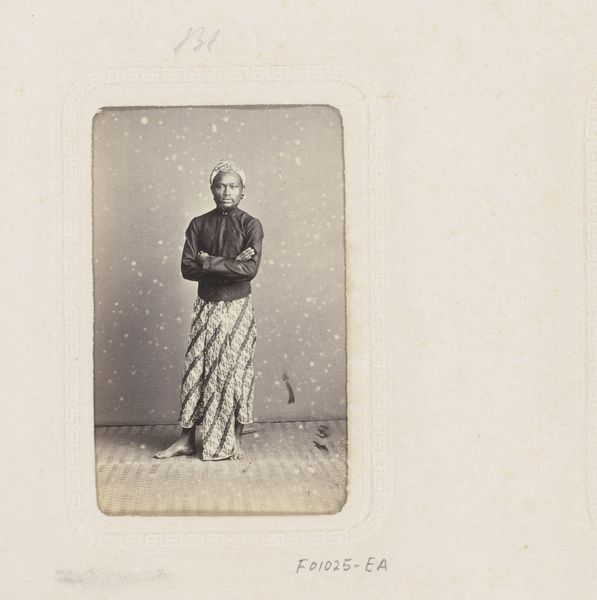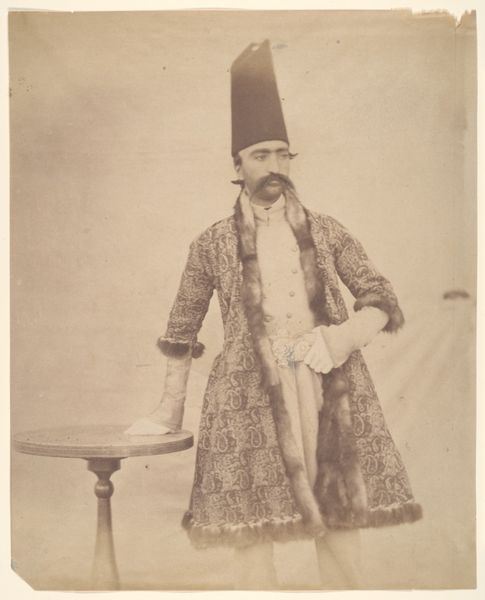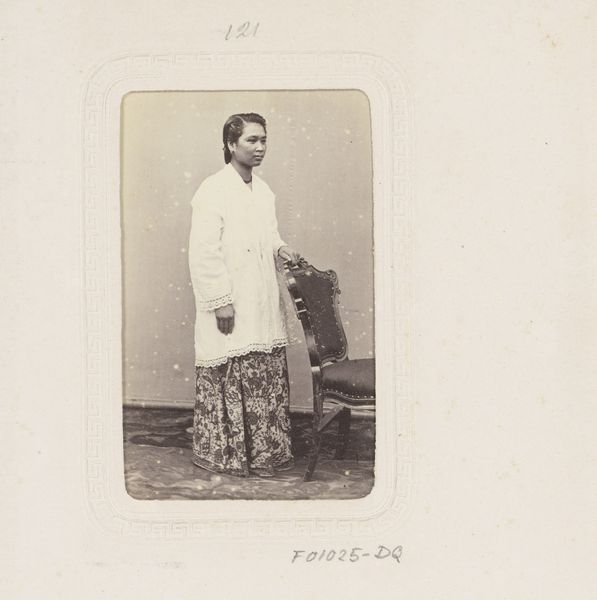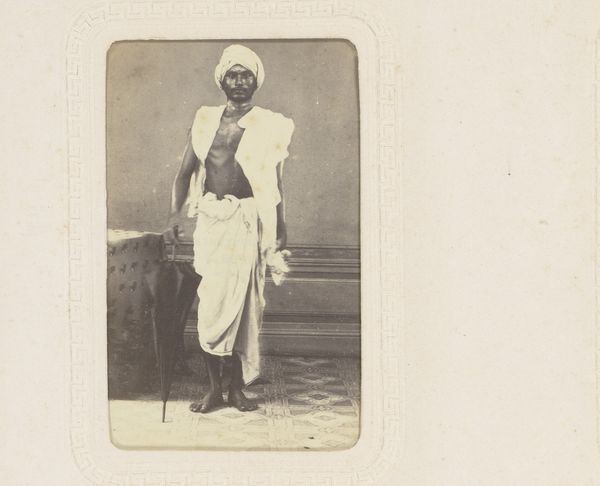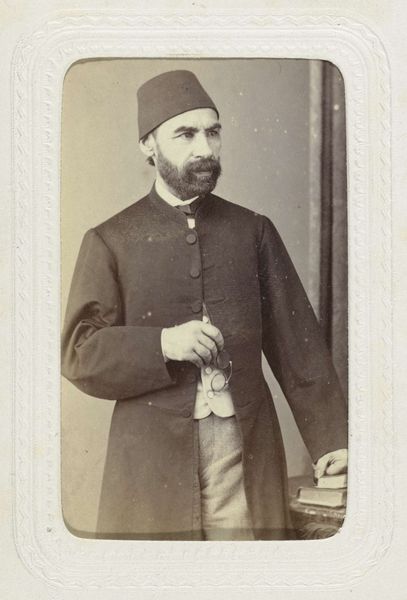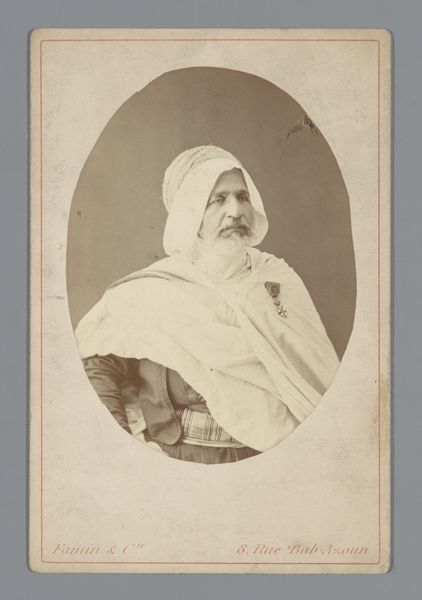
photography
#
portrait
#
african-art
#
photography
#
historical photography
#
orientalism
#
19th century
Dimensions: height 85 mm, width 52 mm
Copyright: Rijks Museum: Open Domain
Curator: Here we have "Portret van een Maleisische man," or "Portrait of a Malaysian Man," a photograph created sometime between 1867 and 1880 by G.R. Lambert & Co. It resides here at the Rijksmuseum. Editor: He seems very proper. Almost theatrical. Staged, you know? The lighting feels soft, almost too flattering, yet he maintains this incredibly serious expression. What sort of statement are they trying to make here? Curator: I think part of that theatricality stems from the photographic process of the time, with long exposure times leading to very posed, intentional portraits. Notice the table he rests his hand on; the way the fabric is draped creates a staged scene. It invites you into a carefully crafted space, which certainly reflects the orientalist style, quite popular then. Editor: It’s true; it’s interesting to consider the power dynamics at play when you consider the staging. The controlled environment contrasts sharply with what could have been an attempt at documentation. I'm thinking of the labor to produce this photo: the specific chemicals, the paper, the construction of the props. Each element is carefully chosen to fit within a particular colonial narrative. Curator: It makes you consider the very act of seeing, doesn’t it? There's this distance, this window into another culture, but through a lens of... well, you’re right: labor and a curated gaze. But doesn't it also allow us to reflect on how constructed our own notions of identity are as well? The materials reflect a desire for, shall we say, “civilized” documentation, fitting subjects of colonial endeavors into boxes of understanding? Editor: Precisely. Even the umbrella seems like a performative prop rather than a practical object. Consider how mass production impacted photographic studios globally. Did standardized approaches strip away or enhance local perspectives? That's the question at its core here for me, always the underlying labor! Curator: And for me, it's this strange dance between performance and perceived truth that captures my attention. In this "Portrait of a Malaysian Man," aren't we seeing a carefully constructed moment designed to be preserved? Editor: It's a powerful reminder that even seemingly objective images carry immense social weight, a reminder that extends to our world of rapid production today. The choice of materials always dictates a story. Curator: Absolutely. It's in looking closely that we start to see how stories are really told.
Comments
No comments
Be the first to comment and join the conversation on the ultimate creative platform.
